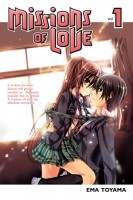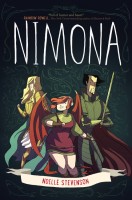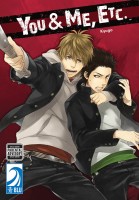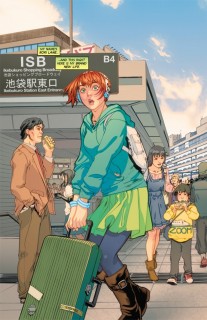 Author: Kazuki Sakuraba
Author: Kazuki Sakuraba
Translator: Jocelyne Allen
U.S. publisher: Viz Media
ISBN: 9781421578576
Released: April 2015
Original release: 2006
Awards: Mystery Writers of Japan Award
Kazuki Sakuraba is probably most well-known as the creator of Gosick, a series of light novels which would later be adapted as a manga series, an audio drama, and an anime series. Two of those novels were released in English by Tokyopop. After her success with Gosick, Sakuraba would go on to write and publish mainstream novels and essays as well, several of which would earn her awards and nominations for her work. Red Girls: The Legend of the Akakuchibas is one of those novels. Originally published in Japan in 2006, Red Girls won the Mystery Writers of Japan Award in 2007. That fact caught my attention as I have thoroughly enjoyed other novels that have won that particular award, as did the striking cover design of the English-language edition of Red Girls. The novel was released in English in 2015 by Viz Media’s speculative fiction imprint Haikasoru with a translation by Jocelyne Allen. Although Red Girls is the third novel by Sakuraba to have been translated, it was actually the first one that I read and was my introduction to her work as a whole.
For a time, the village of Benimidori, found in the western reaches of Japan’s Tottori Prefecture, was largely controlled by two rival families: the Akakuchibas, known as “red above” and who operated a steelworks factory, and the Kurobishis, known as “black below” and who were prosperous shipbuilders. While the Kurobishis were nouveau riche, the Akakuchibas were an old, upstanding family, and so quite a stir was caused when a young mountain girl who had been abandoned in the village was selected to marry the family’s heir. That was Manyo, a clairvoyant whose ability to see the future would help guide the family through a number of crises, including the tragic death of her firstborn son. The responsibility to carry on the Akakuchiba name then fell to her daughter Kemari, a wild young woman who would also die young, leaving behind a daughter of her own. By all appearances, Toko, unlike her mother or grandmother, seems to be an ordinary girl, but she is the only person to whom Manyo confessed a closely kept secret—she once killed someone.
Red Girls is divided into three parts, each one respectively devoted to the retelling of the lives and legends of Manyo, Kemari, and Toko. Eventually it is revealed that Toko is the novel’s narrator, recording the stories that she has been told by and about her mother and grandmother in an attempt to identify the person whose death Manyo claims to be responsible for. People associated with the Akakuchibas have a tendency to die in unexpected or peculiar ways, and so Toko knows of several individuals who could have been potential victims. As with any family story passed on from one generation to the next, there is a certain amount of fiction and embellishment that is added to the retelling of events. As she investigates the unusual circumstances involved in the various deaths, Toko must also closely reevaluate everything that she has been told about her family, teasing apart the stories in order to determine what exactly is the truth, what has been exaggerated, and what details continue to remain hidden and unsaid.
In addition to providing an intriguing mystery that Toko feels compelled to unravel, the narrative found in Red Girls serves another, very important purpose. It is a way for Toko to come to terms with the history of the Akakuchiba family and her position within it, allowing her to take her place in a line of powerful matriarchs. It’s not something that she is initially prepared to do, feeling inadequate when compared to her grandmother and mother and their various accomplishments. Red Girls also situates the legend of the Akakuchibas—and a legend it is, full of peculiar and fantastical elements—within the greater context of Japan’s economic and social histories. As Japan changes over time, so must the Akakuchiba family and its members, and so must the way they think about themselves, their relationships, and their stories. Red Girls is a tremendous multi-generational epic, sometimes strange and sometimes mysterious, but always engaging and oddly compelling. I enjoyed the novel immensely.










